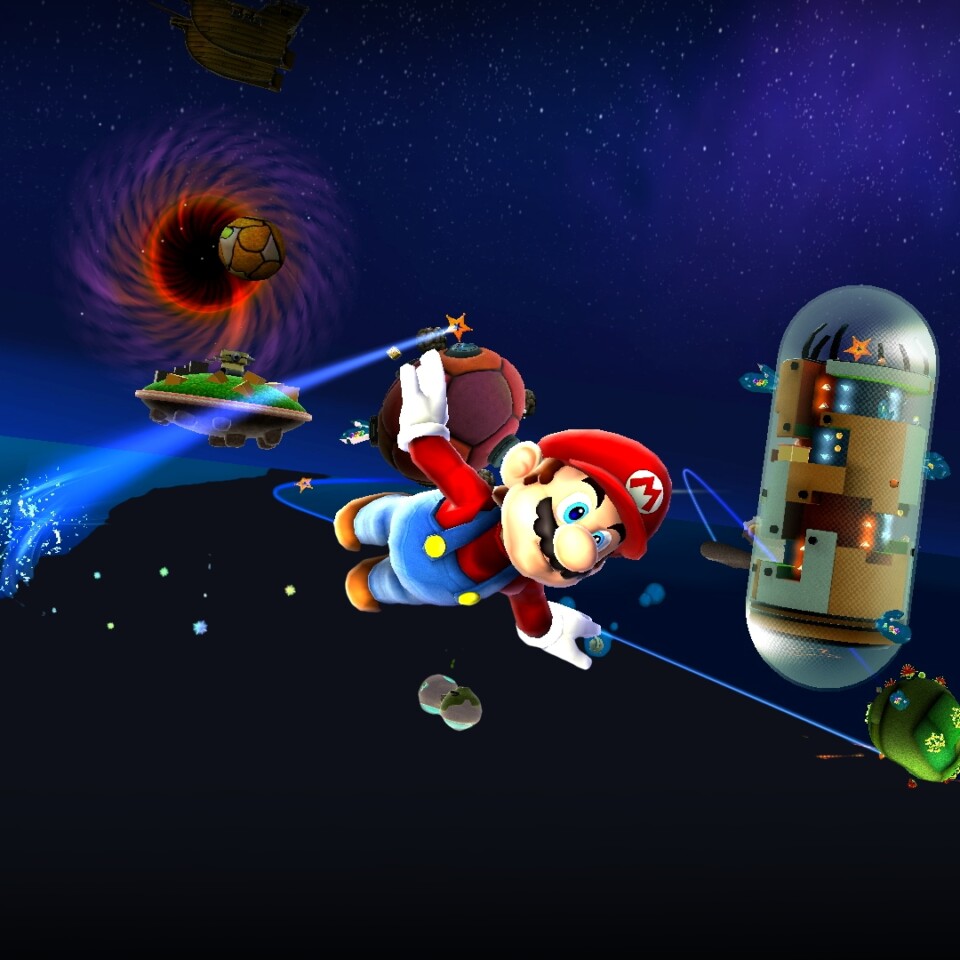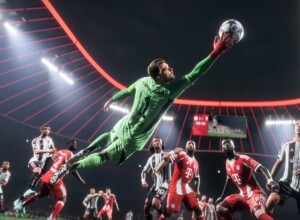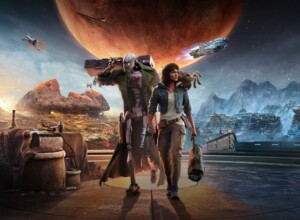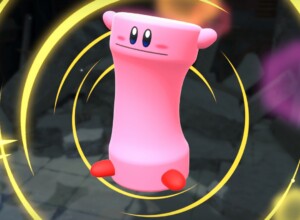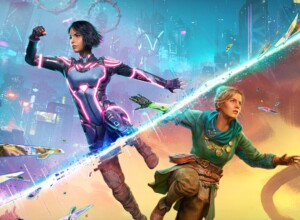There’s something slightly curious about the Super Mario Galaxy games.
Despite the inky expanse of their intergalactic setting, these whimsical, gravity-defying adventures often unfold in relatively compact, finely tuned courses. The cosmic backdrop provides a canvas to create playgrounds unbound by real-world geography. And by using spherical worlds and dynamic gravity, Nintendo was able to remove the need for fiddly camera controls, allowing players to find their footing as they eased into more complex environments.
Perfect, then, for the Wii audience, a large portion of whom might not have been open to something as demanding as, say, Super Mario Sunshine. The duo of Galaxy games had a clear purpose: to provide accessible yet intricate platforming for a broad and evolving player base. Since their release, they’ve been cemented as all-timers of the genre and among the best games ever made. But how well do they hold up under a modern lens?

Well, I could tell you about the honeycombs and haunted halls, the toy worlds that spin on a dime, the lava planets that dare you to leap just a little too far. I could tell you about Mario’s gravity-bending acrobatics, how he slingshots between celestial bodies like a pinball combined with a yo-yo. I could ask you to appreciate the precision, the artistry, the sheer invention on display.
But you already know that.
What you really want to know is now is how these games feel to play in 2025, retooled for the Nintendo Switch and Nintendo Switch 2.
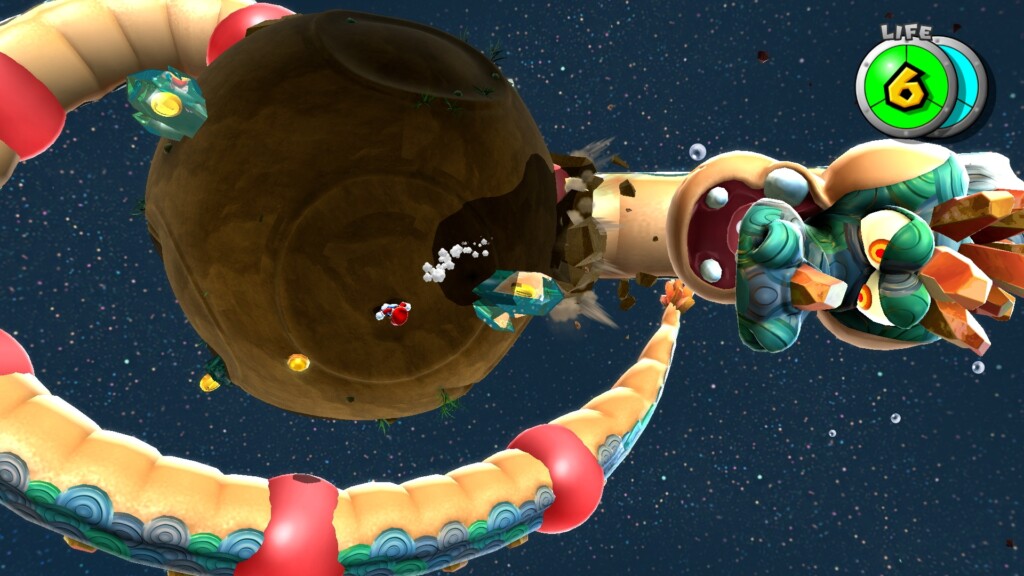
This collection straddles the line between a lavish remaster and a simple port. Both games sparkle on the Nintendo Switch 2, with native 4K resolution in docked mode, running at a buttery 60 frames per second. The resolution caps out at 1080p docked and 720p handheld when playing on the original Switch, but for those with the OLED edition, the vibrant display more than compensates. Colours pop, star bits shimmer, and the soft hues of deep space create a beautiful framing for Mario’s exploits.
Textures have been improved throughout, and everything looks super crisp. The only slight note of caution comes courtesy of my memory. On the Nintendo Wii, these games had a certain cosy warmth, best experienced through the phosphorescent glow of a CRT screen. Here, both games are clearer than ever, but they lack a little of that depth and atmosphere. On the flip side, if you first experienced these titles at 480p via composite or SCART cables, you’ll certainly appreciate the clarity.
And for one final comparison, this release is also an appreciable improvement over the version of Super Mario Galaxy included as part of Super Mario 3D All-Stars.

Back in 2020, the omission of Super Mario Galaxy 2 from that anniversary collection was particularly noticeable. I had always assumed it was, in part, due to the game’s control requirements for Yoshi – specifically, the challenge of replicating the Wii’s precise infrared pointer functionality with the gyroscope-based Joy-Cons.
And so it proves. The original’s motion controls, the bane and blessing of the Wii era, have, for the most part, been elegantly incorporated. Mario’s spin move is now mapped to the Y button, for example, although a shake of the Joy-Con is just as effective as in the original.
However, the precise aiming required when controlling Yoshi is inconsistent at best. In handheld mode, touch controls offer a reasonable substitute, if your fingers can keep up with the action. On the big screen, I recommend swapping out your beautiful Pro Controller for two split Joy-Cons. By closely replicating the original Wii Remote and Nunchuk control scheme, directing Yoshi’s tongue feels much more natural and accurate.
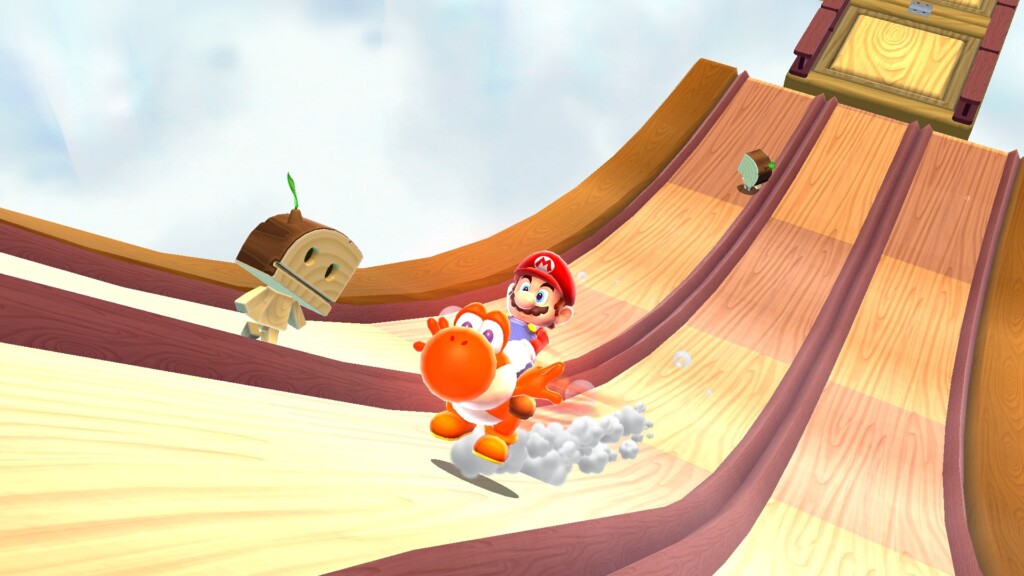
Aside from the enhanced visuals and control options, these new editions are not a radical overhaul. There are no new levels, no art galleries, and not even a unified menu tying the two games together; just a visual polish and the soundtracks to both titles, which, admittedly, are masterpieces. As ever with Nintendo, that restraint feels deliberate. A stubborn insistence that the work speaks for itself. The approach underlines Nintendo’s current philosophy of preservation through polish, repackaging, and premium pricing.
Some will see it as a missed opportunity, and that’s probably a fair complaint. But what you’re paying for, arguably, is the chance to play two of the greatest 3D platformers ever made, both running flawlessly and looking phenomenal.

What’s remarkable is how modern these games still feel. The level design remains sharp, surprising, and full of rhythm. Even after all these years, Mario’s moveset feels tuned to perfection. Every jump has weight, and every spin has purpose. Most contemporary 3D platformers still borrow from the Galaxy playbook, but few match its sense of momentum. Mario boldly went so Astro Bot could follow.
Playing Super Mario Galaxy and Super Mario Galaxy 2 back-to-back also reveals a clear evolution in Nintendo’s design philosophy. The first game feels like a grand experiment; it’s cinematic, sweeping, drenched in orchestral grandeur, and knitted together with the faint melancholy of a bedtime story.
The sequel, by contrast, strips back some of the fairy tale. Rosalina’s Observatory is gone, replaced by a leaner hub and denser, more inventive levels. Super Mario Galaxy 2 is Mario at his most mischievous. It’s a game of ideas – dozens and dozens of them – fired into space with the confidence of a studio at the peak of its powers.
For the longest time, I was convinced that it was the better of the two. It’s punchier and more confident, for sure. But coming back to both games now, I find myself hesitating. There’s that slight, flow-interrupting irk to Yoshi’s updated controls that wasn’t there before, and the reduction in magical whimsy is a shame. It’s a more focused and generous game, but also a little more mechanical in how it delivers its brilliance.
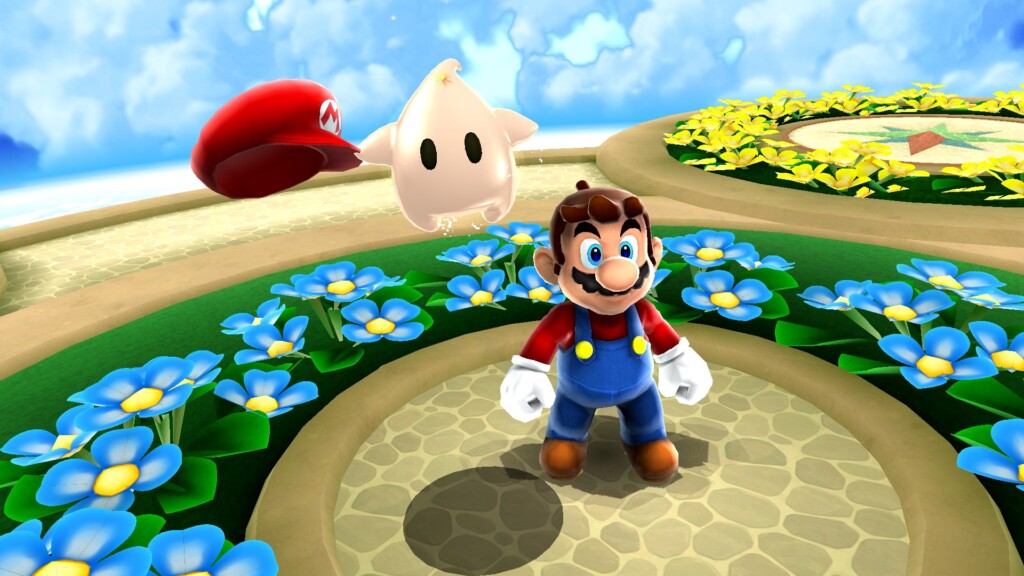
The original Super Mario Galaxy felt like a game with something to prove. Coming off the back of Super Mario Sunshine – a game loved by many but also divisive – and launching on a console pitched to a broad, non-traditional audience, it had to reassert what a 3D Mario game could be. It did so with astonishing grace, and that might just be the more impressive achievement.
In truth, both games are absolute marvels and remain a joy to experience from start to finish. Like the twin suns of Tatooine, they burn with brilliance, each making the other shine brighter.
With the news that Mario’s next cinematic outing will be The Super Mario Galaxy Movie, I have to suspect that a third game in the series is on the way. If it can best these two classics, it will be something to behold.
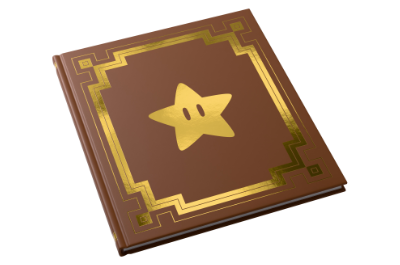
Game: Super Mario Galaxy + Super Mario Galaxy 2
Platform: Nintendo Switch, Nintendo Switch 2
Developer: Nintendo
Publisher: Nintendo
Release Date: October 2, 2025
